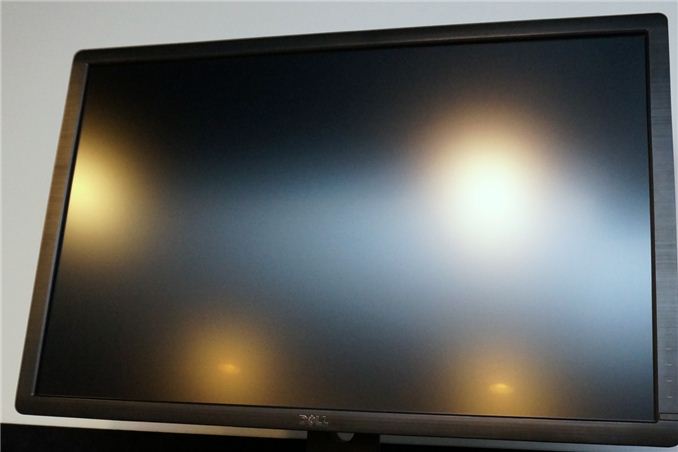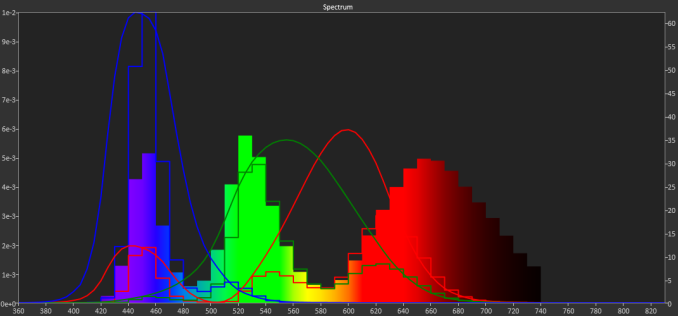Dell U3014 LCD Review
by Chris Heinonen on April 15, 2013 2:00 PM EST
In the last year, 27” 1440p displays went from being really high end in the monitor food chain to becoming close to commodity items that you buy off EBay for cheap from random vendors. It seems that there is a bit of a shift in the high-end display market, where previously resolution was dictating the upper echelon but now as we wait for 4K displays, or retina-style PPI displays on the desktop, it’s other features that are dictating what costs more.
The newest reference display from Dell is the U3014, which takes the place of the U3011. It retains the same 2560x1600 resolution of a 30” display, but adds a few more notable features including DisplayPort MST support, USB 3.0 support, uniformity correction, and most notably it's one of the first LED-backlit displays with an AdobeRGB gamut. Looking only at the specs, this looks like a monitor aiming for the NEC and Eizo users out there, but does it reach those standards?
The LED backlighting this is one of the most interesting things about the U3014. Traditional LED-backlit monitors use White LEDs, which only allow for an sRGB color gamut at maximum. Even then they often struggle to hit the full sRGB colorspace, making LED backlighting more about cabinet looks, and possibly energy use, than about performance. There have been a few exceptions like a Dell laptop and Samsung desktop LCD that used RGB LED backlighting, but typically despite the hype and marking around it LED lighting is usually not a sign of high performance in a monitor, and often it can be a sign of the opposite.
The U3014 uses a GB-LED lighting system, where you have Green and Blue LEDs and a red phosphor that is excited by those LEDs to produce a much larger spectrum of light wavelengths, which allows for a larger color gamut. This article provides some more details and even talks about Quantum Dots, which Sony is starting to use on their TVs and you might see in a computer monitor at some point as well. To give another example of the wider gamut these can produce, here are the spectral signatures recorded in CalMAN using the Dell U3014 and the Nixeus VUE 27” and its standard White LEDs.

Looking at these two charts (which are a bit confusing, I admit), we see that the level of blue output is similar from both, which we expect with LEDs. What you see on the Dell is a much higher level of green and red spectrum available, which is what allows for the larger color gamut to be used. Previously we’ve had to rely on CCFL lamps to do this larger gamut, but now with some LED tricks and a matching red phosphor, we can have LED illuminated displays that utilize a larger gamut.
Of course you also have the assumption that more colors = better, right? Well, unfortunately that isn’t the case. If you only have a larger gamut and not software that understands how to use that gamut, what you get are colors that are further outside of the gamut than they should be. Greens are too green, reds are too red, and everything looks like a badly calibrated OLED smartphone. Anyone buying something like the U3014 is going to need to have accurate colors in any colorspace, and the Dell offers an sRGB mode as well.
In addition to the preset sRGB and AdobeRGB modes, Dell offers two custom CAL1 and CAL2 modes that their calibration software can set to any gamut and white point you want. I will look at this in a moment and cover its performance.










84 Comments
View All Comments
Kevin G - Tuesday, April 16, 2013 - link
I had to re-read the article to catch the few bits regarding MST support. I'm curious to see how well the MST hub works with a DP 1.1 monitor (more than likely) and a DP 1.1 output from a video card (not so likely). I was hoping for a bit more testing in this area but I guess you had to work with what you have on hand.Did you try any active DP-to-DVI adapters for usage with other displays?
Could you logically rotate the display connected via the MST out port independently of the primary?
Can the refresh rates on each monitor be adjust independently as well?
DigitalFreak - Monday, April 15, 2013 - link
RTFATrefugl - Monday, April 15, 2013 - link
You mention a 30" IPS display selling at Monoprice. Do you have plans to review, or can point me in the direction of one? I'm interested in a 30" display that is "decent" - I plan on using it for typical desktop use and gaming.Martin_Schou - Monday, April 15, 2013 - link
Does this monitor support USB over DisplayPort? I'm guessing it doesn't, and to be honest, I'm starting to be annoyed at having to pull an extra cable, that is frankly unneeded.cheinonen - Tuesday, April 16, 2013 - link
It doesn't seem to, no. When I unplugged the USB cable the USB devices stopped working, even though its connected over DisplayPort. A restart didn't fix this either.airmantharp - Monday, April 15, 2013 - link
TFT Central did an in-depth look into the input lag, and while they found similar numbers in the default modes, there is a 'gaming' mode that they measured at ~3ms. It appears to bypass all of the circuitry used for processing and scaling, and along with the new AG coating, makes this monitor preferable to HP's ZR30w for gaming.cheinonen - Monday, April 15, 2013 - link
I ran all the tests in the gaming mode, so that is where the numbers come from. So I don't know if the different methods account for everything, or if they might have gotten a different firmware, or something else.airmantharp - Monday, April 15, 2013 - link
I feel for you- trying to do an objective test without the equipment is challenging. I was just hoping to address some of the 'it's awful for gaming!' comments that ignored your mention of TFT Central's finding, especially as it's probably the best 30" for gaming.tocket - Monday, April 15, 2013 - link
What are the CIE standard observer color matching curves doing in the "spectral signature" chart? That is not very useful I think - it only makes it more confusing. I also want to comment that having "a much larger spectrum of light wavelengths" does not give you a larger gamut volume. If you want to get the largest possible gamut monochromatic light sources should be used (ideally at something like 450, 520 and 640 nm).cjl - Monday, April 15, 2013 - link
A quick comment - those touch sensitive buttons that you keep complaining about? Those aren't new. As a U3011 owner, I can tell you with some certainty that they've been there on Dell's flagship since at least the 3011. I haven't had any problems with mine either as far as responsiveness is concerned, but that may be personal preference (or maybe I happened to get a monitor with above-average responsiveness to the buttons).